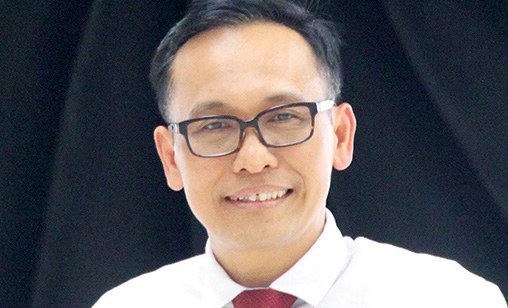Main Story
ASEAN open skies proves elusive
On January 1, ASEAN open skies was due to come into being. But the day passed with a whimper rather than a bang as the 10 nation bloc failed to reach agreement on the regime.
February 1st 2016
ASEAN‘s (Association of Southeast Asian Nations) planned Open Skies has missed its 2015 year end deadline with most analysts agreeing full implementation remains elusive. Read More » Kuala Lumpur-based Endau Analytics analyst, Shukor Yusof, said the bloc is “a long way from becoming a single aviation market given the reluctance of some member states, namely Indonesia and the Philippines, to engage in a long-term initiative to be less protectionist about their markets”.
“Both these countries have yet to ratify the scheme. Indonesia is only allowing Jakarta to participate while the Philippines has opened all of its cities to ASEAN open skies except its main hub in Manila. I am not fully convinced there is sufficient political will, at least this year, for anything constructive to take place in the near term,” he said.
ASEAN is made up of Brunei, Cambodia, Indonesia, Laos, Malaysia, Myanmar, the Philippines, Singapore, Thailand and Vietnam.
 |
| 'In a real single market like Europe, any European Union (EU) airline can fly between any two points in the EU. It will be many years before ASEAN achieves this kind of integration, so the ASEAN single market is, in reality, incomplete' |
| Dr. Alan Tan National University of Singapore professor of law |
Elsewhere, the response to ASEAN open skies has been mixed. Singapore remains at the forefront of support for liberalization. It has removed all restrictions of entry. It is the smallest nation in the bloc and stands to benefit most from full open skies because it is a single city state. Malaysia also is a staunch supporter of liberalized skies. But Laos has been reluctant to free up Luang Prabang and Vientiane, particularly to Thailand’s carriers.
Acknowledged aviation legal expert, Dr. Alan Tan, a professor of law at the National University of Singapore, told Orient Aviation a great deal of work remains to be done to achieve economic and market integration of the ASEAN aviation sector. Additionally, technical and regulatory integration within the block are in their very early stages of development.
“It is likely Asam (ASEAN Single Aviation Market) will have to be extended, or have a second stage declared for the post-2015 period, to tackle unfinished business and new matters. In other words, Asam remains very much a work in progress,” he said.
Dr. Tan said it is important to understand that ASEAN open skies does not include domestic flights. For example, a Malaysian carrier cannot fly between Jakarta and Bali. Nor does the scheme allow for seventh freedom rights, i.e. an airline’s right to fly between points in two other countries.
“In a real single market like Europe, any European Union (EU) airline can fly between any two points in the EU. It will be many years before ASEAN achieves this kind of integration, so the ASEAN single market is, in reality incomplete,’’ Dr. Tan said.
“There have been doubts about ASEAN’s ability to meet the open skies deadline since the liberalizing regime was put forward almost a decade ago. ASEAN is made up of an extremely disparate group of nations ranging from developed Singapore to emerging Myanmar, Laos and Cambodia. The smaller states worry their home carriers will be swamped by bigger established airlines from Singapore, Thailand and Malaysia.
| Challenges ahead for ASEAN open skies * Persuade the Phillipines to open Manila to unlimited flights and win approval from Indonesia and Laos to allow flights for all other points apart from their capital cities * Win ASEAN states approval to accord each other’s carriers seventh freedom rights * Include technical harmonization on the ASEAN open skies agenda, particularly pilot training and common ramp inspection standards |
“The counter argument to resisting change is that a liberalized aviation sector will boost air traffic in a region with a population of 625 million, stimulate air connectivity, encourage higher service quality and lower fares.
“At present, the liberalizing of market access is limited to third, fourth and fifth freedom rights, which means airlines must still begin and end their flights at home-state points.
“For example, a Thai carrier cannot base aircraft in Indonesia to connect Jakarta and Manila, which is a seventh freedom. A beneficial route would Bangkok-Jakarta-Manila-Jakarta-Bangkok, a fifth freedom operation that starts and ends in Bangkok, but enjoys traffic pickup rights in Jakarta going both ways.
Dr. Tan said the seventh freedom issue must be addressed explicitly in the post-2015 period and allowed to flourish within the ASEAN open skies framework.
Senior aerospace analyst at Forecast International, Ray Jaworowski, said no one denies liberalization will benefit ASEAN and fuel aviation growth in the region. “It may open up channels for collaboration among operators, but it does not necessarily run on complementary operations as a single entity against the rest of the world,” he said.
“The EU has seen increased competition in the single market, benefitting customers and driving carriers to be more cost-efficient. Low-cost carriers such as Ryanair and easyJet have become more than just low-end niche players. They are serious threats to legacy carriers already struggling to stave off competition from more efficient and service-friendly foreign airlines.
| AirAsia’s solution to limited skies AirAsia, to allow it to fly to domestic cities in ASEAN nations, has established joint venture airlines with large minority stakes in Thailand, Indonesia and the Philippines. In this structure, ThaiAirAsia, as a Thai airline, can connect Bangkok and other points, including domestic cities in Thailand. The Bangkok-based carrier can build its network in a way that AirAsia would not be permitted to do. All three of these carriers, as well as AirAsia X, are technically separate, but they share the same marketing and brand platform. To passengers they are all AirAsia. |
“The single market has led to mergers for strength, such as the International Airlines Group (IAG) which agglomerates British Airways, Iberia, budget carrier Vueling and Aer Lingus and is 10% owned by Qatar Airways. [But] it is hard to envisage, at this stage, such a development within ASEAN.
“The region has made some liberalizing progress especially as the market growth in the budget sector. But the pace is not moving fast enough. So long as the goal posts keep shifting forward, it is easy to lose the drive to change. Priorities can change quickly. ASEAN nations are caught in the global scramble for economic pacts in a world increasingly threatened by geopolitical rivalry drawn along economic lines.
“They, not as a bloc, but individually, risk isolation and being disadvantaged by non-participation. This could be a distraction away from the ASEAN agenda.”
At a recent conference on budget airlines, the CEO of Jetstar Asia, Barathan Pasupathi, said ASEAN liberalization is restricted by limited infrastructure in some countries, notably insufficient airport slots in Indonesia and the Philippines. “The new rights are the slots,” he said.
Not everyone is pessimistic about liberalization’s progress in the Asia-Pacific. Indonesia may be accused of dragging its heels on ASEAN open skies, but the nation’s airlines forecast passenger demand will grow up to 15% this year as a result of a better regulatory environment and the opportunities offered by ASEAN open skies.
“In 2016, there will be better prospects than last year, including the release of the eighth economic package accommodating business interests,” said Indonesian National Air Carriers Association (INACA) chairman and Garuda Indonesia president director, Arif Wibowo.
Import duties on aircraft components and maintenance and spare parts have been scrapped in the stimulus package, a decision Wibowo said would save Indonesian airlines between 10% and 15% in operating costs.
 |
“Our expansion to ASEAN countries will be stronger. We will connect the entry and exit points from the open sky to all of Indonesia,” he said.
In Vietnam, Vietnam’s deputy prime minister, Hoang Trung, speaking in January, called on the country’s aviation industry to build and upgrade its airports so that the country could become one of the top four ASEAN nations in aviation. In addition to developing a young and modern fleet, the sector should reduce airfares, improve service quality and international competitive capacity and expand domestic and international routes, he said. The industry has signed 67 bilateral agreements on aviation transport and six multilateral ones, while actively joining the ASEAN aviation market, he said.
One of the biggest issues for ASEAN is integration of aviation oversight. Currently, rules vary from country to country even at the level of designated separation distances between aircraft during flight.
One of the leading proponents of change has been AirAsia founder, Tony Fernandes, who has made strong calls for ASEAN to establish a common aviation regulator. He said ASEAN institutions should “step forward for commonality, for standardization and for quality”.
Various national regulators and airlines have suggested such a development could take as long as two decades. “Given the (different) speed of development in each country, I don’t think it will be done anytime soon and may take at least 20 years to take shape,” Chula Sukmanop, director of the Office of Civil Aviation in Thailand told media recently.
Dr. Tan said: “In the EU, there are common standards for safety inspections. A check done on an aircraft in Germany would be valid throughout Europe. Similar agreements apply to pilot training and certification standards.
“The situation is far less evolved in ASEAN. It will be many years before there can be common standards and procedures on safety. For example, Cambodian trained pilots being recognized ASEAN-wide.”
Some industry figures don’t even believe common aviation standards should exist across ASEAN. Garuda’s Wibowo said: “Each inspector should intensify aircraft maintenance and ensure a high level of scrutiny. Secondly, regulators in each country should be able to check all airlines in an integrated way. There’s no need to raise it to the ASEAN level.”
Forecast International’s Jaworowski said that as important as ASEAN open skies ultimately may be, it is only an initial step in realizing the full potential of the Asia-Pacific travel market.
“Future actions could involve the removal of operating restrictions on carriers, changes in airline ownership policies, formation of a region-wide regulatory agency (similar to the European Aviation Safety Agency) and establishment of an integrated air traffic management system. But right now, very little of that seems likely in the short to medium term.”
| Cargo boost from open skies Indonesia predicted the country’s air cargo industry will benefit from the multilateral agreement which will open freight services between ASEAN countries, bringing the promise of air cargo volume increases of up to 50%. Head of the association’s cargo division, Boyke P. Soebroto, said that the multilateral agreement would broaden the market for Indonesian air cargo service providers. Before this year, Indonesia’s air freight aircraft were required to stop in countries like Singapore as a hub, en route to a final destination. “For example, there was not a direct (air cargo) flight from Jakarta to Hanoi but with liberalization, we can fly directly from Surabaya to Hanoi,” Boyke said. “This is a chance for Indonesian air cargo service providers to get into ASEAN industrial centers, both for imports and exports.” Under the ASEAN cargo agreement, Indonesia is opening seven cities to incoming and outgoing freight services: including Palembang, South Sumatra; Manado, North Sulawesi; Makassar, South Sulawesi and Biak, Papua. The Philippines has promised to open six cities, including Cebu, while Thailand plans to open seven cities, including Bangkok and Phuket. |